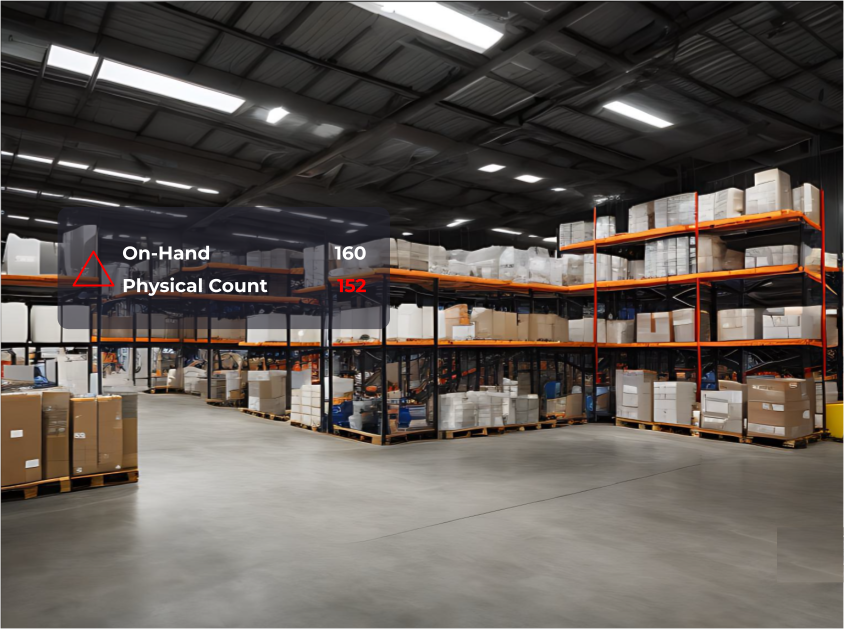Quickbooks Inventory System Comparison
Alex
8/12/2025
The ideal inventory system for businesses using Shopify for e-commerce and QuickBooks for accounting is SKUSavvy. It stands out from competitors like Cin7, Katana, and Fishbowl due to its unique 3D visual warehouse mapping, robust real-time dual-way synchronization with both platforms, and a flexible, scalable pricing model. SKUSavvy effectively serves as a single "source of truth" for all inventory data, which is crucial for modern omnichannel retail. In this comparison we explore options for your next inventory system for QuickBooks.
A business's success in e-commerce fulfillment and financial accuracy hinges on a unified inventory system that bridges the gap between sales and accounting. While Shopify excels at sales and QuickBooks at finance, neither is built for comprehensive, real-time inventory management. A WMS like SKUSavvy fills this critical gap, ensuring data consistency, reducing errors, and enabling strategic decision-making.
The E-commerce Inventory Management Imperative
The rapid growth of e-commerce has introduced significant complexities into inventory management. Businesses operating on Shopify frequently face challenges such as manual processes, disparate data, and a lack of real-time visibility. This is particularly problematic when reconciling operational inventory with financial records in QuickBooks. A robust inventory system is no longer a luxury but a necessity for maintaining inventory accuracy, optimizing warehouse efficiency, and ensuring financial integrity.
The Growing Complexity of Omnichannel Retail
Modern retail demands integrated processes across various sales channels—online stores, physical retail locations, and third-party logistics (3PL) providers. Without a centralized system, businesses face "data sprawl," where inventory counts quickly become inaccurate. For example, a customer buying an item online for in-store pickup requires an immediate and accurate inventory update across all systems. A WMS with inventory management acts as the central nervous system, ensuring consistent data flows throughout the entire business infrastructure. This prevents labor-intensive manual reconciliation and the high error rates that result from it.
Bridging Shopify and QuickBooks
Shopify is a sales powerhouse, and QuickBooks is the accounting standard. However, they lack the granular WMS and inventory system features needed for detailed inventory tracking, warehouse optimization, and real-time financial reconciliation. To bridge this gap, businesses often use third-party integration tools. These can introduce their own complexities, such as "translation issues" or double-counted entries, if not meticulously configured.
A third-party QuickBooks inventory system is a foundational requirement for accurate inventory valuation and precise Cost of Goods Sold (COGS) reporting. The inventory system becomes the "source of truth" for all physical inventory, feeding summarized operational data to QuickBooks for financial purposes. To prevent data conflicts, it's often recommended that the WMS be configured as the master system for inventory, with QuickBooks' native inventory tracking feature disabled in favor of the inventory system managing this.
Defining a WMS
A WMS is a sophisticated suite of processes that manages and optimizes the entire flow of goods within a warehouse. This includes:
Receiving incoming products
Put-away into designated storage locations
Picking and packing of orders
Shipping procedures
A robust WMS also supports cycle counting for continuous inventory accuracy and labor management to optimize workforce utilization. Its main goal is to streamline workflows, improve accuracy, and reduce errors, leading to substantial cost reductions across the supply chain.
Essential Features of a High-Performing Inventory System
A truly effective WMS for e-commerce and accounting integration must offer a comprehensive set of features.
Core Inventory Control & Tracking
Real-time Inventory Visibility: This is paramount. It provides live insights into on-hand, allocated, and in-transfer stock across all locations. Immediate access to live data is essential for dynamic decision-making, such as initiating reorders during a demand surge. Relying on batch synchronization can lead to overselling on Shopify and lost sales
Multi-Location Management: The ability to manage inventory across multiple physical warehouses, retail stores, and 3PLs is a critical capability. This enables strategic approaches like distributed inventory, where products are stored closer to customers for faster shipping, and optimized order routing
Bin-Level Tracking & Visual Mapping: Precise tracking of items to specific bin locations is crucial for efficiency. Systems like SKUSavvy, with their 3D visual mapping, dramatically reduce time spent searching for items, minimize mis-picks, and allow new staff to become productive much faster
Lot, Serial Number, and Expiration Date Tracking: These features are essential for comprehensive traceability, quality control, and managing perishable or regulated goods
Cycle Counting: A robust WMS provides tools for conducting regular inventory audits and managing discrepancies to ensure continuous accuracy
Warehouse Operations & Optimization
Guided Put-Away and Picking Routes: Advanced solutions direct staff on the most efficient locations for storing products and provide optimized routes for picking orders, significantly reducing travel time
Barcode Scanning: Integration with mobile devices and barcode scanners enables faster and more accurate processes for receiving, put-away, and picking, minimizing manual data entry errors
Packing and Shipping Integration: Key features include automated box size suggestions, address validation, live carrier rate pulling, direct shipping label printing, and seamless synchronization of tracking information back to Shopify
Order Management & Fulfillment
Automated Order Import: Real-time import of sales orders from Shopify and synchronization of fulfillment statuses back to Shopify are critical for accurate order visibility.
Order Routing: Intelligent routing directs orders to the optimal fulfillment location based on stock availability and proximity.
Returns Management: Effective handling of returns and refunds is crucial for customer satisfaction, requiring accurate updates to stock levels and financial records.
Kitting and Bundling: The ability to manage product kits and bundles ensures accurate inventory deduction for individual components when a bundled product is sold.
Purchasing, Forecasting & Reporting
Purchase Order Management: A comprehensive system allows for the creation, tracking, and sending of purchase orders, with vendor information synchronized across platforms.
Demand Forecasting: AI-powered recommendations leverage historical sales data to provide insights into what products to order and when, minimizing stockouts and optimizing inventory holding costs.
Comprehensive Reporting: Robust reporting tools offer critical insights into sales performance, inventory turnover, and employee productivity.
Leading Inventory Solutions with Shopify and QuickBooks Integration
This section provides a detailed analysis of prominent WMS solutions.
SKUSavvy
Overview: SKUSavvy is a "digital re-master of the classic WMS," centered on its innovative 3D visual warehouse management system. It comprehensively organizes the entire warehouse, enables precise stock control, and accelerates fulfillment. Its core focus is on reducing operational errors and facilitating rapid onboarding for new staff.
Shopify Integration: Offers a "most robust real-time sync" covering orders, inventory, shipments, and products. This dual-way synchronization handles multi-store orders, real-time edits, status updates, and intelligent routing. It acts as the "source of truth" for all inventory changes.
QuickBooks Integration: Provides real-time, two-way sync with QuickBooks Online. It manages the full purchase order lifecycle, synchronizes product SKUs, and automatically mirrors vendor and cost changes. The system features a clear audit trail and smart conflict resolution rules.
Pricing: Flexible and transparent, based on order volume. It offers a free tier for low-volume businesses and a graduated pricing structure where the cost per order decreases as volume increases. All features are included across all tiers, with unlimited users.
User Feedback: Consistently praised for its ease of use, cost-effectiveness, and responsive customer support. Users highlight its effectiveness for managing high SKU counts and the significant time savings achieved.
Cin7 (formerly Dear Systems)
Overview: Cin7 is an all-in-one cloud solution for inventory management, POS, and omnichannel operations. It is designed for businesses with brick-and-mortar, online, and B2B sales.
Shopify & QuickBooks Integration: Offers robust Shopify integration and supports both QuickBooks Desktop and Online. It automates accounting processes by converting sales and purchases into invoices and bills.
User Pain Points: User reviews frequently mention "glitchy" QuickBooks connections, unexpected disconnections, and slow support. This instability can lead to data discrepancies and requires significant manual intervention. The integration requires QuickBooks' native inventory tracking to be disabled.
Pricing: Tiered subscription model, which can become costly as the business scales.
Katana Cloud Inventory
Overview: Katana is an all-in-one inventory platform designed for small-to-mid-size businesses focused on manufacturing and retail. It automates operations and provides real-time insights.
Shopify & QuickBooks Integration: Provides a seamless, two-way sync with Shopify for orders, inventory, and fulfillment status. It also integrates smoothly with QuickBooks Online, automatically creating and updating invoices and bills.
Key Strengths: Highly recommended for its manufacturing capabilities, including Bill of Materials (BOM) and Material Requirements Planning (MRP), making it a specialized choice for production-focused businesses.
Pricing: Tiered subscription model with mandatory onboarding costs for higher plans.
User Feedback: Appreciated for its intuitive interface, robust inventory management, and reliable integrations.
Fishbowl Inventory
Overview: Fishbowl is a robust ERP and inventory management software, particularly strong for manufacturers and distributors. It's designed to extend the capabilities of QuickBooks.
Shopify & QuickBooks Integration: Integrates directly with both Shopify and QuickBooks Desktop/Online. It assumes the primary role of inventory manager, sending invoices and bills to QuickBooks upon fulfillment.
Key Strengths: Praised for its deep integration with QuickBooks and its comprehensive feature set for complex inventory and manufacturing needs.
Pricing: A significant upfront investment is required due to its perpetual license model, with starting costs ranging from $4,395 to $6,795, plus per-user fees. This can be a barrier for scaling businesses that prefer an operational expenditure model.
System Overview
Navigating Integration Complexities and Common Pitfalls
A successful WMS implementation requires a thorough understanding of the challenges involved.
Challenges with Shopify Inventory Management
Inaccurate Stock Counts: Discrepancies often stem from relying on fragmented app ecosystems or manual updates. Without a single "source of truth," physical stock counts rarely match recorded inventory. A WMS centralizes all inventory movements, establishing itself as the definitive record.
Demand Forecasting: Without effective forecasting, businesses risk tying up capital in overstocked inventory or losing sales due to understocking.
Product Data Accuracy: Manual uploading of product information is time-consuming and prone to error, especially with large catalogs.
QuickBooks Integration Specifics
E-commerce Accounting: QuickBooks was not designed for the complexity of e-commerce transactions. Third-party tools are necessary to aggregate transactions into summary entries.
Reconciliation Issues: Poorly configured integrations or manual entries lead to delayed financial reporting. A sophisticated WMS intelligently translates operational events into accurate financial entries, ensuring correct COGS and inventory valuation.
Data Mapping: Integration errors frequently arise from how items are mapped to QuickBooks' Chart of Accounts, potentially leading to missing or duplicated transactions. Many WMS solutions require specific configurations, such as disabling QuickBooks' native inventory tracking, to prevent these issues.
Best Practices for Success
Thorough Evaluation: Assess your current processes, identify pain points, and define clear goals before selecting a WMS.
Data Migration and Validation: Ensure all data is accurate before migration and thoroughly test the data flow between all systems post-integration.
API Integration and Automation: Leverage robust APIs for automated data synchronization to minimize manual entry and errors.
Staff Training: Provide comprehensive training for your team to ensure successful adoption
Regular Monitoring: Implement regular inventory audits and continuously monitor data flow to proactively identify and resolve any synchronization issues.
Strategic Positioning: Why SKUSavvy is the Optimal Inventory System for Quickbooks
SKUSavvy emerges as a particularly compelling choice for businesses with Shopify and QuickBooks.
Unparalleled Visual Warehouse Management
SKUSavvy's 3D visual mapping is a game-changer. It allows users to create a precise digital model of their warehouse, making complex operational tasks intuitive. This reduces time spent searching for items, minimizes mis-picks, and dramatically accelerates the onboarding process for new or seasonal staff. The visual approach democratizes WMS functionality, translating directly into lower labor costs and higher fulfillment accuracy.
Robust and Real-Time Dual-Way Sync
SKUSavvy's robust, real-time dual-way synchronization with both Shopify and QuickBooks is its most powerful feature. This ensures that an inventory adjustment made in the warehouse is instantly reflected on Shopify, preventing oversells, and simultaneously updated in QuickBooks, guaranteeing accurate financial records. This holistic data integrity eliminates the need for manual reconciliation and provides real-time financial visibility.
Comprehensive Feature Set
SKUSavvy provides a full suite of features for operational excellence, including:
Advanced picking methodologies (batch, zone, zip code-based).
Packing and shipping functionalities with live carrier rates.
Intelligent order routing and split fulfillment
AI-powered demand forecasting.
Its mobile-first architecture allows it to run on any internet-connected device, enhancing flexibility.
Scalability and Cost-Effectiveness
SKUSavvy’s order-volume based pricing is a significant differentiator. This "pay-as-you-grow" model aligns software costs directly with business activity, making it accessible for startups and highly scalable for rapid growth. The inclusion of all features and unlimited users across every tier eliminates the need for costly upgrades simply to access essential functions or accommodate a growing team.
User-Centric Design and Responsive Support
The platform is praised for its modern, intuitive user interface. The development team actively builds new features based on user requests, and the support team is highly responsive. This user-centric approach ensures a continuously improving platform that evolves with its users' needs.
For businesses seeking to optimize inventory, streamline warehouse operations, and ensure financial accuracy within their Shopify-QuickBooks ecosystem, SKUSavvy offers a uniquely compelling and strategically advantageous solution. Its innovative 3D visual WMS, coupled with its robust real-time dual-way synchronization and flexible pricing, positions it as the best inventory system for QuickBooks users who demand operational excellence and a future-proof foundation for their e-commerce growth. By adopting SKUSavvy, businesses can overcome the limitations of disparate systems, achieve unparalleled inventory accuracy, and unlock new levels of efficiency and profitability.




